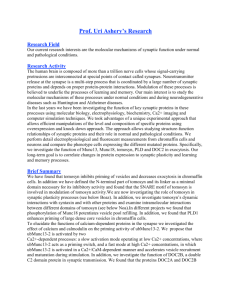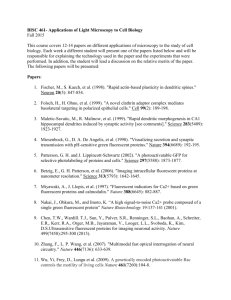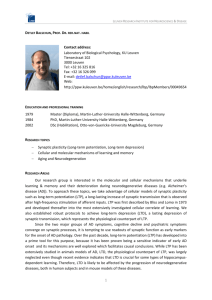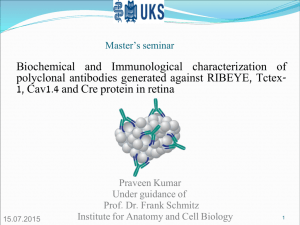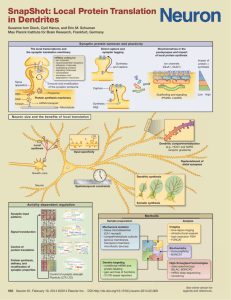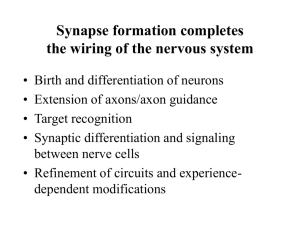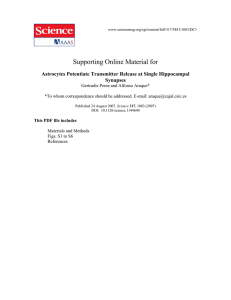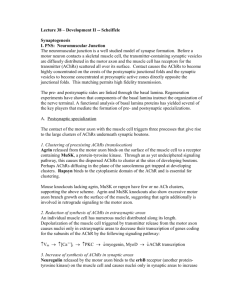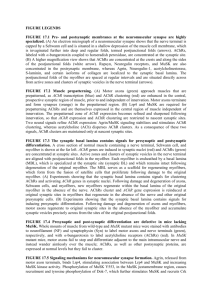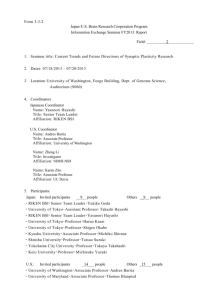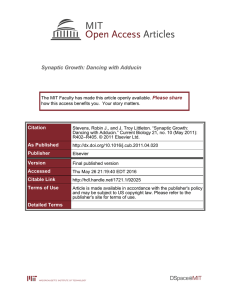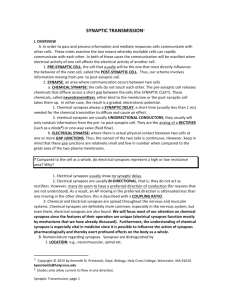Titolo Mutations in synaptic cell adhesions molecules and autism
advertisement
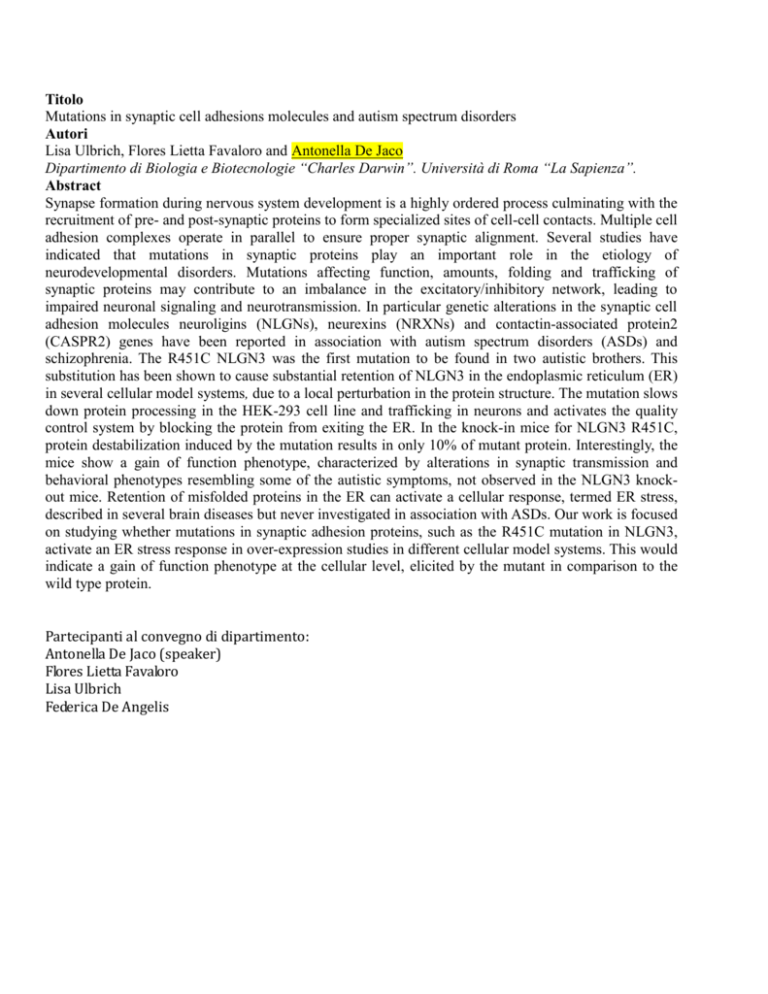
Titolo Mutations in synaptic cell adhesions molecules and autism spectrum disorders Autori Lisa Ulbrich, Flores Lietta Favaloro and Antonella De Jaco Dipartimento di Biologia e Biotecnologie “Charles Darwin”. Università di Roma “La Sapienza”. Abstract Synapse formation during nervous system development is a highly ordered process culminating with the recruitment of pre- and post-synaptic proteins to form specialized sites of cell-cell contacts. Multiple cell adhesion complexes operate in parallel to ensure proper synaptic alignment. Several studies have indicated that mutations in synaptic proteins play an important role in the etiology of neurodevelopmental disorders. Mutations affecting function, amounts, folding and trafficking of synaptic proteins may contribute to an imbalance in the excitatory/inhibitory network, leading to impaired neuronal signaling and neurotransmission. In particular genetic alterations in the synaptic cell adhesion molecules neuroligins (NLGNs), neurexins (NRXNs) and contactin-associated protein2 (CASPR2) genes have been reported in association with autism spectrum disorders (ASDs) and schizophrenia. The R451C NLGN3 was the first mutation to be found in two autistic brothers. This substitution has been shown to cause substantial retention of NLGN3 in the endoplasmic reticulum (ER) in several cellular model systems, due to a local perturbation in the protein structure. The mutation slows down protein processing in the HEK-293 cell line and trafficking in neurons and activates the quality control system by blocking the protein from exiting the ER. In the knock-in mice for NLGN3 R451C, protein destabilization induced by the mutation results in only 10% of mutant protein. Interestingly, the mice show a gain of function phenotype, characterized by alterations in synaptic transmission and behavioral phenotypes resembling some of the autistic symptoms, not observed in the NLGN3 knockout mice. Retention of misfolded proteins in the ER can activate a cellular response, termed ER stress, described in several brain diseases but never investigated in association with ASDs. Our work is focused on studying whether mutations in synaptic adhesion proteins, such as the R451C mutation in NLGN3, activate an ER stress response in over-expression studies in different cellular model systems. This would indicate a gain of function phenotype at the cellular level, elicited by the mutant in comparison to the wild type protein. Partecipanti al convegno di dipartimento: Antonella De Jaco (speaker) Flores Lietta Favaloro Lisa Ulbrich Federica De Angelis




